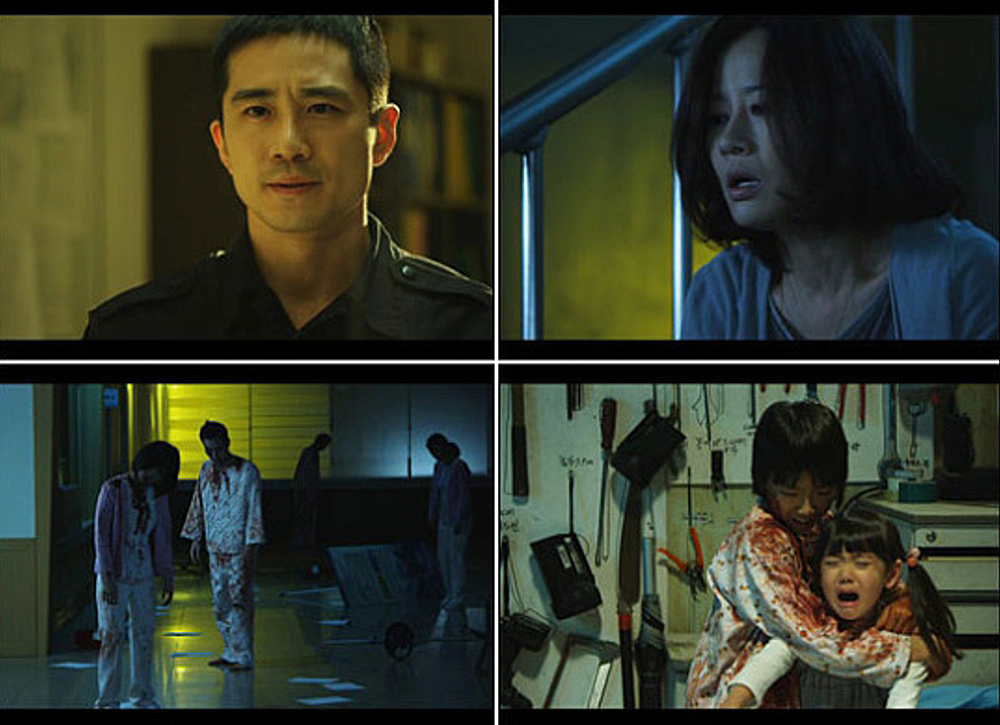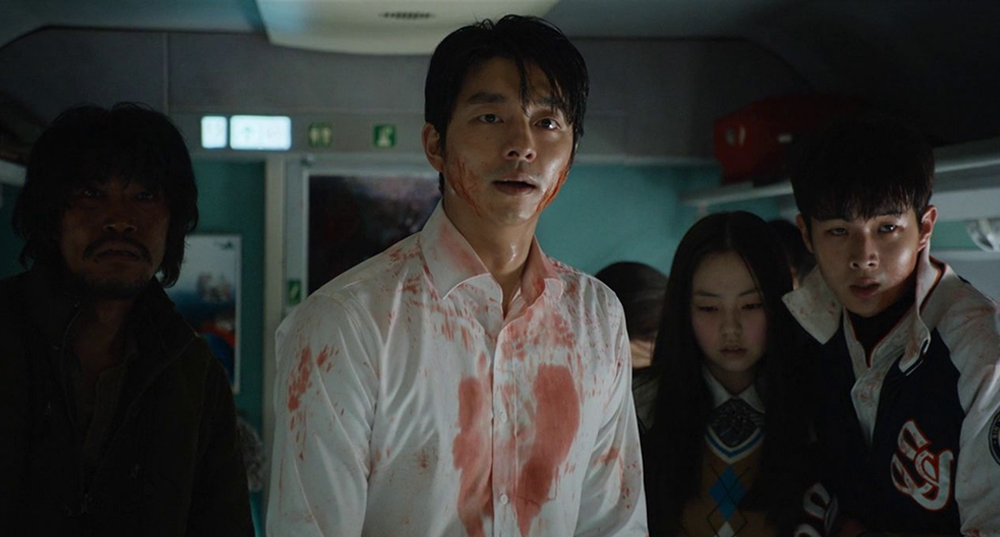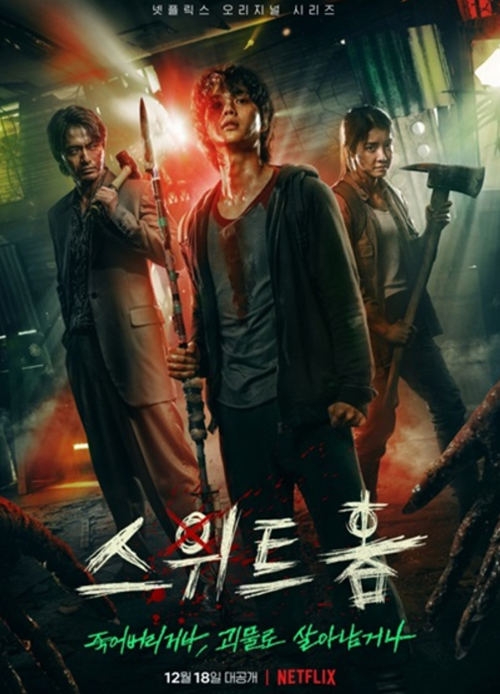K-Content News
- January 14, 2025 | Broadcasting
Advice for the Long-term Rule of Subculture Dramas that Became Mainstream
Zombies, creatures, and occult belonged to subculture genres in the K-drama world. However, K-subculture dramas born from meeting global OTT platforms' capital power have gained worldwide popularity and now established themselves as "mainstream." What key lessons should K-subculture dramas, currently facing a slowdown, keep in mind?

©Shutterstock
When the Netflix drama "Hellbound" was released in November 2021, many were startled by the 'thump-thump' approaching messengers of hell. After Netflix's service in Korea, various unknown beings appeared, including zombies (2019's "Kingdom"), monsters (2020's "Sweet Home"), but "Hellbound's" messengers were different. While their movements resembled humans, they were monsters with unprecedented forms. Three years later, watching the recently returned "Hellbound 2," people are no longer startled by these messengers. Instead, reactions suggest it's "boring." Various attempts have been made over several years, and viewers have become accustomed to bizarre forms.
Korean Subculture Dramas Beginning with Zombie Content
Zombies, creatures, occult... Dramas belonging to so-called "subculture genres" were long considered non-mainstream in Korea due to their rarity, but now they have emerged as mainstream. Subculture dramas began with 'zombies.' Even before Netflix made "Kingdom," zombie dramas appeared rarely though receiving little attention. While 1981's "Grotesque Corpse" is considered the starting point for zombie content in films, 2011's MBC two-episode "I’M A SURVIVOR," produced for their 50th anniversary, was Korea's first terrestrial broadcast zombie drama. Compared to the American drama "The Walking Dead" starting Season 1 in 2010, subculture attempts on Korean TV were quite early. Though the makeup and graphics were awkward and amateur, it was encouraging that a special genre like zombie content was broadcast on terrestrial TV.

Korea's first terrestrial broadcast zombie drama "I Am Alive" ©MBC
While zombie dramas made their debut, their progress in Korea was slow. In zombie dramas meant to be enjoyed for watching zombies, awkward zombie depictions became obstacles to viewer attraction. Those encountering zombie content for the first time felt repulsed by settings like humans being eaten, while zombie content fans were not satisfied with "The Walking Dead" as their reference point. Technical investment was needed to capture even niche audiences, but broadcasters concerned with ratings couldn't continue producing non-mainstream genres. Instead, vampires requiring no special makeup and resembling humans gained popularity. 2011's "Vampire Prosecutor" (OCN). "Vampire Prosecutor" also considered zombie characters initially but ultimately changed to vampires during discussions. Disaster dramas that could occur in daily life also poured out, like 2013's "The Virus" (OCN) and "The End of the World" (JTBC) about viruses.
What the Success of Zombie Drama "Train to Busan" Tells Us
Zombies emerged as mainstream media content when the 2016 film "Train to Busan" succeeded. While zombies remained awkward in "Train to Busan," it diverted attention by projecting Korean-style melodrama through paternal love. Though zombie appearances were still awkward, the father's (Gong Yoo) struggle for his daughter resonated deeply with audiences. Ma Dong-seok's scene knocking down zombies with bare fists was unrealistic but satisfying in itself. Investing about ₩11.5 billion to create a blockbuster from previously "low-budget B-grade" zombie content was also a success factor for "Train to Busan." Unlike foreign works, scenes of zombies running quickly in groups offered new spectacles unseen in previous dramas. Additionally, the presence of renowned actors like Gong Yoo and Ma Dong-seok helped reduce audience apprehension toward the genre, making it more approachable for mainstream viewers. After "Train to Busan's" success, subculture was no longer an unfamiliar genre, and TV attempted occult content like 2018's "The Guest" (OCN).

"Train to Busan" made zombie content familiar to the public ©NEW
Capital Power Expanding Genre Through Challenge and Experimentation
While the potential was seen in "Train to Busan," subculture dramas remained difficult to attempt on TV as proper production required significant funding. The landscape changed dramatically with the entry of Netflix, which began offering its services in Korea and made substantial investments in Korean dramas. Netflix invested over ₩35 billion in production costs for "Kingdom." Investing huge sums in zombie content was surprising for Korean dramas. Though "I’M A SURVIVOR" made exceptional attempts for its time with film staff participation and a month of post-production work, the scale of Netflix's production set a new standard. Enhanced makeup techniques and the integration of advanced special effects significantly reduced the awkwardness often associated with earlier efforts in the genre.
After "Kingdom" created a global buzz, the Korean drama market embraced "challenge" and "experimentation" as defining principles for genre expansion. Experimental genres previously unattempted due to lack of funding or fear of failure poured out. A director who made subculture dramas for OTT said, Netflix provided creative freedom without the constraints of ratings, allowing us to fully explore and develop subculture dramas." This led to Korea's first creature feature "Sweet Home,” followed by "Gyeongseong Creature" and "Parasyte: The Grey."

Korea's first creature feature "Sweet Home" ©Netflix
Technologies that Grew Subculture Dramas
The sustained growth and dominance of subculture dramas have been driven by significant technological advancements achieved through continuous experimentation. "Sweet Home" Season 1, costing around ₩30 billion, features high-quality bizarre forms including tentacle monsters, half-headed monsters, muscle monsters, and eye monsters. Starting with attempts to create monsters by filming actors' motion capture and adding computer graphics, "Sweet Home" developed visual effects (VFX) technology through seasons. Such visual effects became crucial to subculture drama growth. While Season 1 relied on external help including Hollywood special effects teams, from Season 2, domestic technology could complete the work. Being able to create high-quality creature features independently enabled the creation of "Gyeongseong Creature" and "Parasyte: The Grey." "Sweet Home" also introduced “virtual production,” combining live-action and virtual images in real-time for the first time in Korea. This innovation not only enhanced the realism of the scenes but also brought attention to emerging professions like body movement specialists, who focus on perfecting the gestures and motions of actors portraying fantastical or unknown beings.
Distinctly Korean K-Subculture Dramas
Korean subculture dramas received global acclaim by shifting focus from mere survival against unknown beings to exploring the relationships between humans and conflict against these unknown beings. A hallmark of successful Korean subculture dramas is their distinct "Korean-style" branding, as seen in terms like "K-zombie" and "K-creature." "Gyeongseong Creature" uses Korea's unique history of Japanese colonial period human experimentation as background, where the protagonist searches for her missing mother. However, when the mother encounters her daughter, maternal instincts take over, adding a poignant layer to the story. In "Kingdom," the king's greed leads to hungry citizens becoming zombies. Korean-style subculture dramas also served as microcosms of our society, depicting people's stories in extreme disaster situations. "All of Us Are Dead," set in a high school, uses school violence as the catalyst for a zombie virus outbreak. The story of children suffering as victims of a flawed system created by adults resonated deeply with audiences. Some creature features like "Parasyte: The Grey" discuss coexistence between unknown beings and humans.

'K-creature' feature "Gyeongseong Creature" ©Netflix
In the End, Content is the Answer
However, subculture dramas that raced ahead excitedly are currently stagnant. Producers who once thrived on creative freedom supported by global OTT funding have struggled to deliver results that surpass their early successes. "Sweet Home" Seasons 2 and 3 were not as successful, "Gyeongseong Creature" faced criticism for awkward creature expression, and "Hellbound" Season 2 is called boring. Audiences who were once thrilled simply by the emergence of Korean creature-based dramas have grown accustomed to such themes after years of exposure to similar genres. While new beings unseen in Korea previously masked weak narratives, but we have now moved beyond that stage. Unknown beings' mere appearance cannot satisfy viewers anymore. Convincing and interesting content development utilizing them has become important. While OTT platforms grew subculture dramas, some attempts closer to creators' self-satisfaction and romance realization were grand in scale but poorly executed.
As the drama market recently struggled, investment decreased and creators focused on new characters and fresh material rather than scale. This has led to what industry insiders describe as an ironic phenomenon: as the market becomes tougher, creators are returning to the "essence" of storytelling. This shift equally applies to subculture dramas. Subculture drama growth has come full circle to reach the obvious but forgotten answer that content remains the key to success.
Written by Nam Ji-eun (The Hankyoreh Reporter)
Original article URL: https://www.kocca.kr/n_content/kocca_vol34/vol34/07.html
